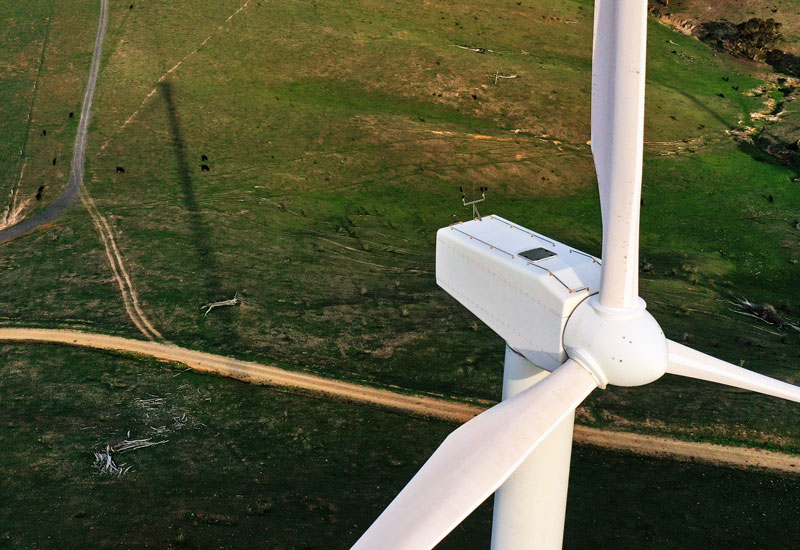Get the right experience for you. Please select your location and investor type.
IMPORTANT NEWS: Transition of investment management responsibilities
First Sentier Group, the global asset management organisation, has announced a strategic transition of Stewart Investors' investment management responsibilities to its affiliate investment team, FSSA Investment Managers, effective Friday, 14 November close of business EST.

Our approach to sustainable investing
We believe companies that deliver benefits to society and the environment face fewer risks over the long-term and are therefore better placed to deliver positive returns to shareholders.


Our goal is to generate positive returns for our clients. We believe that companies that deliver benefits to society and the environment face fewer risks over the long-term and are therefore better placed to deliver positive returns to shareholders. We also know that we have a role to play that goes beyond that.
Companies are living, breathing entities that affect the world around them. They have the power to change people’s lives for the better and to contribute to solving some of the biggest challenges we face. We understand therefore that when we buy a share in a company, we are buying more than a piece of paper. We’re also purchasing influence and the ability to effect positive change.
We can choose, for example, to allocate money to a company producing healthier foods that reduce the risk of diabetes, rather than one producing sugary drinks. And we can choose to invest in a company that manufactures vaccines and plasma protein biotherapies or one that contributes in other ways to economic development or human welfare and safety.
Each of us in Stewart Investors investment team signs up to a code of conduct – our Hippocratic oath – in which we promise not to pursue returns to the extent that our actions will knowingly harm others.


We also promise to allocate funds where they can be used for the future benefit of all.
Investing in companies that are socially useful, that support and work within environmental system limits, and that have responsible business practices, helps us to protect and grow our clients’ capital, while at the same time honouring our promises to contribute to making a real and positive difference.
How we think about sustainability
Sustainable investing can mean many things to different people, but at Stewart Investors, the approach focuses on finding and investing in high-quality companies run by excellent management teams, that contribute to, and benefit from, sustainable development. We consider that a company will contribute to, and benefit from, sustainable development if its activities lead to positive social outcomes or positive environmental outcomes.
While the United Nations Sustainable Development Goals and other frameworks can be valuable for understanding sustainable development issues, we have found the chart below, a useful way to show the two important and often interconnected topics of human development and environmental sustainability. Combining these two high-level priorities provides a good understanding of what sustainability is. Economist Kate Raworth describes is as providing ‘for every person’s needs while safeguarding the living world on which we all depend.’1
Sustainable development
Human Development Index and Ecological Footprint of countries
On its vertical axis, the graph uses the concept of ‘ecological footprint’ to plot humanity’s use of water, land, food and other natural resources. On the horizontal axis, the graph uses a broad measure of human development – the Human Development Index (HDI) developed for the United Nations by economist Amartya Sen, and which includes metrics related to income, education and health.
The further right a country is on the chart, the more developed it is considered to be, in terms of income, health and education. However, because the world's primary growth model relies heavily on resource use and consumption, more developed countries tend to consume more resources and are positioned higher on the ecological axis of the chart.
Each circle represents a country and the diameter of the circle is proportional to that country’s population (hover over the circles to view each country).
For a society to deliver high human development but still live within its environmental means, the HDI measure should be at least 0.7, and the ecological footprint should be below 1.7 global hectares per person. The minimum global sustainability box in the bottom right quadrant shows this zone. Sadly, not many countries are in this box.
As countries get richer, and move to the right of the chart, they tend to move vertically upwards and consume an unsustainable level of resources.
- The challenge for all societies is to shift their development path towards the minimum global sustainability box, i.e. high human development with a sustainable environmental footprint.
- The challenge we set ourselves is to find and invest in high-quality companies that are both contributing to and benefiting from this shift. That means we look for businesses which help move societies from top to bottom on the chart by reducing environmental impacts, and from left to right by improving human development outcomes.
Why sustainability is important for long-term investing
We believe that companies that deliver benefits to society and the environment face fewer risks over the long-term and are therefore better placed to deliver positive returns to shareholders.
We don’t accept – as the prevailing resource-intensive development model implies – that sustainable outcomes are somehow a trade-off against a company’s long-term profitability. On the contrary, we would not consider a company with poor sustainability positioning to be one of good quality and worthy of investment.
Sustainability is part of our investment philosophy because it makes sense, both at a financial level and at a societal level.
Headwinds and tailwinds
We are living through a time of growing sustainable development challenges, including depletion of resources, scarcity and degradation of land and water, and increasing population density, particularly in the developing world.
As long-term investors we must consider both the risks these challenges pose to a company and the opportunities they present.
We like to think of these opportunities and challenges as winds, and we ask ourselves: is a tailwind going to propel a potential investment forwards, or will a headwind block progress or blow it off course?
- A company whose operations reduce negative environmental and social impacts, or firms that provide food, beverages and consumer staples beneficial to human health and hygiene, are likely to benefit from sustainability opportunities (tailwinds).
- Conversely, a fossil fuel company might face significant sustainability challenges (headwinds) as its business model could be disrupted by electric vehicles or solar energy.
Identifying long-term sustainable development opportunities and challenges becomes an important part of minimising risk and maximising returns for our clients.
We believe the best way to understand headwinds and tailwinds in practice, is through the stories of the companies we invest in. Portfolio Explorer provides our view on each company’s sustainability positioning, the risks they face and areas for improvement.
What we don't do
- We do not have a separate sustainability team determining an ‘investable list’. All judgments are made by members of our investment team.
- As active investors, we do not rely on ESG agencies to rate the sustainability positioning of companies, to point us in the direction of reputedly sustainable companies or to exclude others through a high-level screening process.
- We don’t focus on themes or ‘green’ sectors. Instead, we focus our analysis on individual companies. We invest in many companies that have excellent sustainability positioning but do not appear on thematic lists because the contribution they make is less obvious or indirect. For example, companies that develop the equipment used to test the safety of electric batteries.
- We do not put sustainability positioning above, or hold it distinct from, company quality, or vice versa. Significant losses can occur in companies that have great sustainability positioning but unethical management teams or deep financial weaknesses, just as they can in companies who lose stakeholder trust and their social license to operate.
- Our focus on positive social and environmental contributions to sustainable development means we avoid harmful and controversial companies.
You can view our position on harmful and controversial products and services here.




